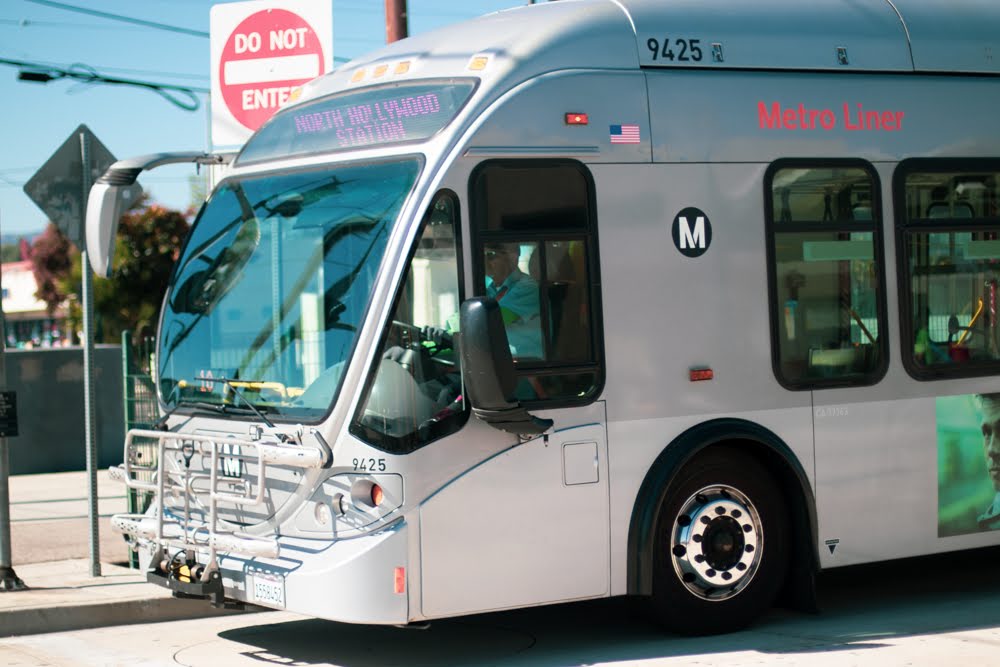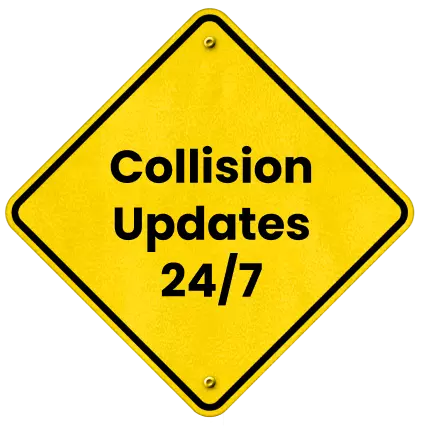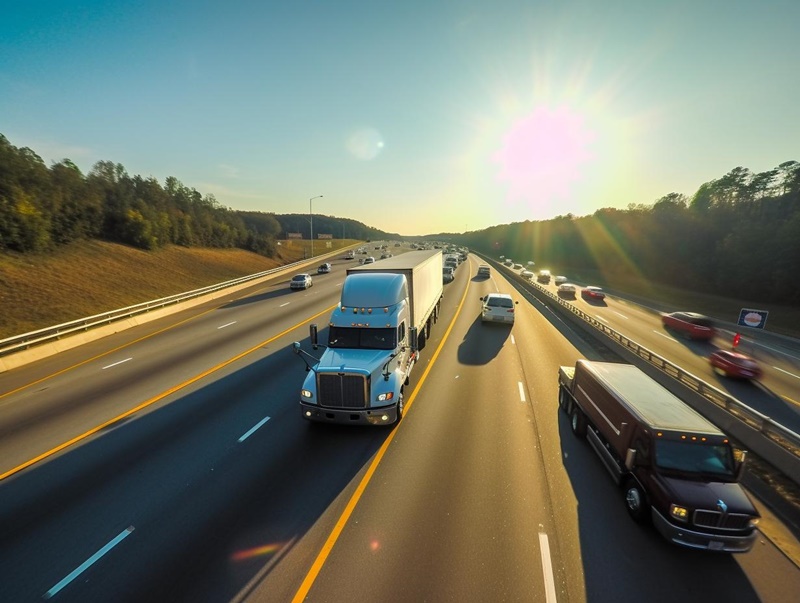
Bus Accidents at I‑5 Rest Stops: Unique Risks and Legal Challenges


Interstate 5 (I‑5) is one of the busiest north-south corridors on the West Coast, stretching from San Diego, California, to Blaine, Washington. Along this corridor, rest stops play a crucial role in maintaining driver safety, providing areas for rest, refueling, and meal breaks for commercial and passenger vehicles, including transit buses, charter buses, and Greyhound services.
Despite their intended safety purpose, rest areas can become the site of accidents. Collisions at rest stops present unique challenges due to the interaction between buses and passenger vehicles, tight maneuvering spaces, and congestion.
Understanding the risks, liability considerations, and investigative approaches is essential for drivers, passengers, and legal professionals dealing with I‑5 rest stop bus crashes.
Unique Risks of Bus Accidents at I‑5 Rest Stops
Rest stop environments on I‑5 create hazards that differ significantly from open highway driving. Key risk factors include:
- Limited Maneuvering Space: Buses require wide turning radii, and narrow lanes increase the likelihood of sideswipes or collisions with smaller vehicles.
- High Vehicle Density: Cars, trucks, RVs, and buses all converge in a confined area, which increases sudden stops and unpredictable movements.
- Pedestrian Presence: Families, travelers, and bus passengers moving around parked vehicles create a risk of injury during accidents.
- Driver Fatigue or Inattention: Long-haul drivers entering a rest area after extended driving hours may be fatigued or distracted.
- Variable Pavement Conditions: Oil stains, wet patches, or uneven pavement reduce traction and make braking more challenging.
These conditions make it easy for even experienced drivers to misjudge spacing, speed, or stopping distances. A minor miscalculation can lead to rear-end collisions, sideswipes, or incidents during parking and departure maneuvers.
Examples of High-Risk Rest Stops Along I‑5
Several rest stops along I‑5 have higher incidences of bus accidents due to factors such as layout, traffic volume, and road geometry.
For instance, the San Clemente Rest Area in California features limited parking lanes and heavy tourist traffic, which increases the risk of sideswipe and rear-end collisions. In Washington, the Fife Rest Area experiences a high volume of commercial vehicles combined with narrow lanes, creating challenges for buses as they enter or exit safely. Meanwhile, the Tully’s Rest Area in Oregon has congested entry and exit ramps, making maneuvering large vehicles difficult and contributing to both minor and major accidents.
Drivers should remain vigilant at these rest stops, anticipating the movement of buses, trucks, and pedestrians in tight spaces. Practicing defensive driving, executing cautious turns, and maintaining situational awareness can significantly reduce the risk of collisions.
Jurisdictional Issues and Investigative Tips
Accidents at rest stops often present jurisdictional challenges because many are located on federally maintained land or near county or state lines. Identifying which law enforcement agency will investigate the accident is crucial for ensuring accurate reports and documentation. For example, California rest stops are generally patrolled by Caltrans and CHP, while Washington rest stops fall under WSDOT and the State Patrol, and Oregon rest areas involve ODOT and the state police.
Investigating a rest stop crash requires careful attention to detail. Key tips include:
- Documenting the Scene Thoroughly: Take high-quality photographs of bus and vehicle damage, skid marks, lane markings, and signage.
- Gathering Witness Statements: Accounts from passengers, other motorists, and rest area staff provide critical corroboration.
- Recording Vehicle and Bus Details: Note the bus company, driver credentials, license plates, and vehicle identification numbers.
- Preserving Physical Evidence: Avoid moving debris, skid marks, or damaged objects until they have been properly documented.
- Collecting Official Incident Reports: Obtain copies from law enforcement and rest stop management as soon as possible.
These investigative steps are particularly important because rest stop accidents often involve multiple insurers, government agencies, and commercial operators, complicating liability determination and claim processing.
Liability Complexities in Rest Stop Bus Accidents
Determining liability in rest stop accidents is often more complex than standard highway collisions because multiple parties can share responsibility. Bus drivers are responsible for safely maneuvering their vehicles, adhering to posted speed limits, and avoiding collisions. Failure in any of these areas can result in personal or employer liability.
The management or operating agency of the rest stop, such as Caltrans in California, WSDOT in Washington, or ODOT in Oregon, can also be partially liable if design flaws, poor signage, or inadequate lane markings contributed to the accident. Other motorists may share responsibility if they acted negligently, such as by making sudden lane changes, parking illegally, or failing to yield. Additionally, the bus company itself can be liable for insufficient driver training, poor vehicle maintenance, or scheduling practices that encourage fatigue-related errors.
Because multiple parties may be involved, establishing liability requires a detailed investigation of vehicle positions, speed, signage, and witness statements. Consulting an I‑5 bus accident attorney early ensures that all potentially responsible parties are identified and that victims can pursue appropriate compensation.
What to Do After an I‑5 Rest Stop Bus Accident
If you are involved in a rest stop bus accident on I‑5, following these steps is critical for safety and legal protection:
- Ensure Immediate Safety: Move vehicles to a secure location if possible and check for injured passengers.
- Call Law Enforcement: Contact the appropriate jurisdiction (state patrol or local police) to file an official accident report.
- Document the Scene: Take photos of all vehicles, skid marks, lane markings, signage, and any damaged property.
- Gather Witness Information: Collect names and contact information from passengers, other motorists, and rest area staff.
- Notify the Bus Company: For commercial or charter buses, inform the operator immediately.
- Seek Medical Attention: Even minor injuries should be documented by a medical professional.
- Consult an Attorney: An I‑5 bus accident attorney can determine liability, coordinate with multiple insurers, and pursue compensation for medical bills, lost wages, and property damage.
Thorough documentation and timely professional guidance are particularly important for rest stop accidents because of the complex interplay between private, public, and commercial parties. Proper steps taken immediately after an accident can influence both recovery and legal outcomes.
Get in touch with an I-5 Accident Lawyer
Rest stop accidents on I‑5 present unique challenges for drivers, passengers, and legal professionals. The combination of tight spaces, high vehicle volume, fatigued drivers, and pedestrian interactions increases the risk of collisions involving buses.
Understanding these risks, documenting incidents thoroughly, and consulting an experienced I‑5 bus accident attorney can protect your rights, help establish liability, and ensure that compensation is pursued fairly. By taking preventive measures, remaining alert, and knowing what steps to follow after an accident, drivers and passengers can safely navigate these critical but often hazardous areas along I‑5.







